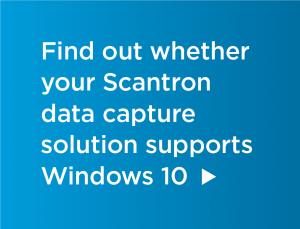In today’s highly connected world, organizations are looking more and more at moving to online data capture for crucial operational forms. While moving to online forms can save money and improve efficiency, the migration process requires more thought than simply flipping a switch. Consider the following tips as you plan your migration strategy.
 1: Develop a written plan with phases and timelines.
1: Develop a written plan with phases and timelines.
Migrating mission-critical data capture forms to online is a big effort, so consider all of the following when planning:
- Are we migrating all of our forms at once?
- If not, which forms will we migrate when?
- Who uses those forms?
- How does moving to online change what we can do with the form? For example:
- Can we set up choice lists differently for improved efficiency?
- What can we pre-fill to reduce data entry?
- Should we include branching/skipping based on form responses?
NOTE: On a paper form, that’s typically handled by something like “If yes, skip to Question 5; if no, skip to question 7″—online forms can hide the unnecessary questions to speed up the process and reduce confusion.
- Are there post-entry data processing steps required by our systems? Are those steps currently automated by our form scanning process? Can those steps be automated in the online system?
- Do our reporting and analysis methods need to change?
- How and when are we going to communicate these changes?
- Does everyone involved have access to an electronic means to complete the form? (See Tip 2, below for more details)
2: Consider keeping a paper option.
Even in our digital world, there are times when paper still has a place:
- Where on-the-spot electronic capture is not practical, such as a shop floor or low-bandwidth locations
- Where it may not be convenient for respondents to use a digital option
- Where your respondents do not have easy access to electronic devices or where having a paper record is part of a document retention policy
- Where the process of direct, manual data entry into online systems slows down productivity—many people can fill out a paper form faster than they can type into an online form
- Where back-end business rules need to be applied to incoming data—paper-scanning systems can automate business rules and eliminate several post-direct entry steps.
Choose a solution that provides both options so that you can maximize your responses.
3: The least expensive option may also have the least flexibility.
There are a lot of free or low-cost online form tools available—but you get what you pay for. Before choosing one of these, ask yourself:
- Does our chosen tool support all of the question types and form features that we need?
- What reports are available within the tool? Do those meet our needs? If not, can we customize them?
- Are data analysis tools built into the solution? If so, do they match our needs? If not, must I export the data and analyze manually? How difficult is that export/analysis process?
Avoid letting immediate costs blind you to pitfalls down the road. The tool’s price might be attractive, but the additional work required to use the data might reduce or eliminate any efficiencies that you gain from moving online.
Scantron is the most recognized name in paper and online data capture. We have ready-made solutions that help organizations bridge the paper-online divide in the following areas:
Need something tailored to your exact needs? We can do that too.



Social
View our latest posts or connect with us below on Social Media.